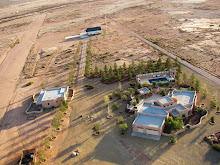After his lesson this morning with Neil, a student came up and asked “What is a whip stall and tumble”? Well, section VIII. Area of operation: Slow flight and stalls, C. Task: Whip stall and tumble awareness (WSCL and WWSCS) of the practical test standard requires the applicant’s knowledge of whip stalls and tumbles be evaluated through oral testing not practical demonstration, so no worries. The student should be able to give an explanation of whip stalls and tumbles and how to avoid them. While Air Creation and other manufacturers prohibit any power-on stall maneuvers (including whip stalls) in weight shift control aircraft some folks have actually published some research and are not hand waving. Drs. Guy Gratton and Simon Newman from the UK explored the phenomena of tumbles in wind tunnel tests. They describe the tumble phenomena as “a pitching departure from controlled flight which leads to a pitch autorotation that is generally unrecoverable – resulting in vertical ground impact, usually preceded by in-flight breakup (the mechanism for which, surprisingly, can sometimes prevent loss of life)”. Specifically, “The mode is a nose-down pitching departure from controlled flight, leading to a pitch autorotation at rates up to 400°/s.” Initiating the tumble requires rotation about the whole aircraft’s center of gravity (CG) and not the wing’s CG or hang point as is normally the case in a power-off stall.
One of the causes, the whip stall. “The whip-stall is an aggressive entry to the aerodynamic stall (pushing the bar out aggressively to achieve a high deceleration rate, well in excess of the 1kn/s normally recommended), followed by an equally aggressive recovery initiation by the pilot (pulling in the control bar rapidly).” A whip stall can be induced by adding power allowing the aircraft to climb, then pushing out rapidly on the control bar to the base tube. At the highest angle of attack the throttle closed and the control bar is pulled in and the aircraft begins to rotate nose down. What the pilot has done is to surpass the critical angle of attack quickly before the stall occurs and then reduces thrust to make the situation worse.
So where is situation this likely to occur? The most obvious scenario is at take off. Allowing the aircraft to become slow or maintaining a high climb angle would put the pilot at risk. So it would seem prudent to keep the airspeed up and climb angle down. If you have an engine out on take off, with a smaller climb angle you will have the airspeed to recover. The second obvious place is practicing stalls. Remember the manufacturers limitations and no power-on stalls, and avoid aggressive bar movement unless required by atmospheric conditions.
Finally, the authors also identify several other possible modes of tumble entry including failed aerobatics, loss of spiral stability in IMC conditions, and flying through your wake at steep bank angles. So one, follow manufactures limitations and no aerobatics, two if you encounter IMC conditions get out (this is in the PTS), and three maintain good positive control in steep banks to prevent unanticipated rolls if you fly through your wake. It is important to note that US manufacturing requirements call for a safety cable in addition to the hang bolt. This reduces the risk from in flight breakup since a redundant system attaching the wing to the trike exists. Now you have one more resource for the oral part of the practical exam and if the DPE asks pull up the references.
References
The Tumble Mode-Where Pilots Fear to Tread
Towards the Tumble Resistant Microlight
The “tumble” departure mode in weight shift-controlled micro light aircraft
Friday
Subscribe to:
Post Comments (Atom)








No comments:
Post a Comment